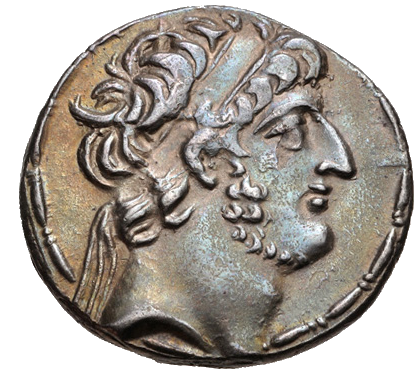
The Wikipedia article of the day for June 6, 2020 is
Demetrius III Eucaerus.
Demetrius III Eucaerus was a Seleucid ruler who reigned as King of Syria between 96 and 87 BC. He was a son of Antiochus VIII and, most likely, his Egyptian wife Tryphaena. After his father was assassinated in 96 BC, Demetrius III took control of Damascus. In 89 BC, he invaded Judaea and crushed the forces of its king, Alexander Jannaeus. By 87 BC, Demetrius III had most of Syria under his authority. He attempted to appease the public by promoting the importance of the local Semitic gods, and he might have given Damascus the dynastic name Demetrias. By late 87 BC, Demetrius III attacked his brother, and rival to the throne, Philip I, in the city of Beroea, where Philip I's allies called on the Parthians for help. The allied forces routed Demetrius III and besieged him in his camp; he was forced to surrender and spent the rest of his life in exile in Parthia. Philip I took Antioch, while Antiochus XII, another brother of Demetrius III, took Damascus.


 The Wikipedia article of the day for June 7, 2020 is Wolf.
The Wikipedia article of the day for June 7, 2020 is Wolf. The Wikipedia article of the day for June 6, 2020 is Demetrius III Eucaerus.
The Wikipedia article of the day for June 6, 2020 is Demetrius III Eucaerus.

 The Wikipedia article of the day for June 5, 2020 is Chestnuts Long Barrow.
The Wikipedia article of the day for June 5, 2020 is Chestnuts Long Barrow.